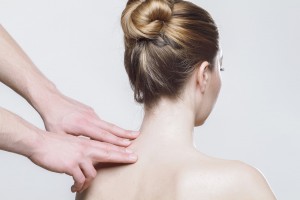Frozen Shoulder Causes
If you’ve ever wondered “what’s frozen shoulder pain like?” Can I have frozen shoulder treatment at home? You probably need to check in with our osteopath specialist Susannah. Osteopathy with Susannah for frozen shoulder works to reduce pain and improve mobility. The anatomy of the shoulder makes it the most mobile joint of the body. This helps explain the causes of frozen shoulder from an osteopath’s view. At Susannah Makram Clinics London we provide clients with frozen shoulder symptoms, both knowledge and understanding of how symptoms of immobility and pain can be improved.
The bones, ligaments and tendons that make up our shoulder joint are encased in a capsule of connective tissue. Frozen shoulder occurs when this capsule thickens and tightens around the shoulder joint, restricting its movement. These are the first signs of frozen shoulder.
Doctors aren’t sure why this happens to some people and not to others. Like the frozen shoulder pain down arm query, it’s not straightforward. This is why osteopathy works differently for management of frozen shoulder pain symptoms. We will outline how next. Although Doctors aren’t sure, it’s more likely to occur in people who recently had to immobilise their shoulder for long periods of time e.g. after surgery or upper body fracture. Also, more susceptible to frozen shoulder symptoms are people with a history of diabetes, thyroid disorders, tuberculosis, cardiovascular disease and Parkinsons.
Frozen Shoulder Symptoms
Frozen shoulder symptoms typically develop slowly and in three stages. What are the first signs of frozen shoulder?
- Freezing shoulder stage: Any movement of the shoulder causes pain and shoulder range of motion starts to become limited.
- Frozen shoulder stage: Pain may begin to diminish during this stage. However, the shoulder becomes stiffer. Using the shoulder also at this the frozen shoulder stage becomes more difficult.
- Thawing stage. Range of shoulder motion shoulder starts to improve.
Each of the the three developmental stages can last a number of months.
Frozen shoulder treatment
As an osteopath Susannah views the entire body’s interaction with the shoulder. How the shoulder interacts in day to day movements, in stillness or semi stillness i.e. seated postures, as well as sleeping postures. The over and underuse of small muscles and their attachments into the spine and surrounding structures or attachments, such as the rib cage can be manipulated by touch.
With gentle and precise pressure, the diaphragm and accessory muscles of breathing, can be stretched. Tension in the diaphragm can be worked on directly and also the fascial attachments, by alleviating tension throughout the sternum and intercostal musculature. This is according to change breathing patterns in movement and in rest.
To summarise how Susannah works, it’s by changing posture patterns that contributed to the cause or directly caused the symptoms of frozen shoulder, at any stage. Frozen shoulder treatment at home by giving advise for frozen should exercises is an important part of our care.
Osteopathy with Susannah Makram for frozen shoulder works because the shoulder’s movement in relation to the body is key to getting long-term results. Osteopathy with Susannah works differently.
Frozen shoulder treatment identifies why the symptoms persist and from where in order to alleviate pain and restore range of movement. Susannah assesses how the body as a whole is reacting to the changes in the shoulder joint affected and whether the frozen shoulder is a reaction to changed movement patterns in the lower limbs, e.g. hips and pelvis; or in breathing mechanisms; or the spine over all. For example, the resting position of the shoulder joint is affected by restrictions in mobility or structural or postural changes in the spine, as well as larger muscle or soft tissue tension or tightness.



